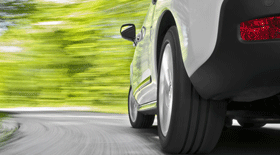 One of the few recent initiatives to improve California’s economic base was left undone when the Legislature recessed this fall without addressing transportation finance.
One of the few recent initiatives to improve California’s economic base was left undone when the Legislature recessed this fall without addressing transportation finance.
Governor Edmund G. Brown Jr. called a special session to fill what he estimated as a $5.7 billion annual hole in highway, bridge and road maintenance and upkeep. The Legislature remains at a standoff over whether the new money should come from increased taxes or revenue surpluses.
But no matter how the special session is resolved, the fundamental structure of transportation finance is unsustainable. Taxation of gasoline is inadequate to meet the needs for system repairs and improvement because gasoline use is becoming disconnected from road use.
In a triumph of technology and market forces, cars have become far more fuel efficient, driving down revenues from the gas tax. Public policy is also lining up against the internal combustion engine, which is the sole consumer of taxed gasoline.
Task Force
Recognizing the long-term inadequacy of taxing gasoline, state leaders commissioned a task force of private citizens to recommend a design and test of the next generation in road finance—a fee based on the actual use of the state transportation network. That group—the California Road Charge Pilot Program Technical Advisory Committee—recently concluded its deliberations and provided recommendations to the Brown administration.
Loren Kaye, president of the California Foundation for Commerce and Education, a nonprofit think tank affiliated with the California Chamber of Commerce, was a member of this committee, representing business and economic interests.
Highway User Fee
Consistent with the authorizing legislation, the committee recommended a road test of a highway user charge that puts a premium on user choice and personal privacy protection. In the spirit of a true user charge, the proposal envisions a broad application of the mileage fee, with no exemptions and no rate differentials—at least in the testing phase. The committee also anticipates the user fee would be set at a rate to offset the gasoline tax. That is, this would be a replacement revenue source, not an additional revenue source.
Ultimately, once the results of the pilot test are in, the Legislature would determine the components of a new road fee—its rate, basis and application.
In the meantime, test participants will enjoy a choice of mileage recording methods, including pre-paid mileage, odometer checks, and automated mileage reporting with or without location data. A time-based permit also was included in the menu of options, although figuring a workable rate that does not encourage abuse will be a challenge.
Seeking Volunteers
The administration is looking for volunteers to participate in the pilot project. It’s free—no out-of-pocket costs. All the volunteer needs is a car. If interested, sign up at www.dot.ca.gov.
A mileage fee scores very high in user equity—it aligns exactly with the amount of use a driver makes of the transportation network. On the other hand, a mileage fee is far more expensive to administer and difficult to enforce than a gasoline tax. Inevitably, the overhead for state collection agencies will be higher and the new tax, at least initially, will be more inconvenient for drivers.
But this is the price of progress. As Californians drive up fuel efficiency and drive out the internal combustion engine, we undermine our historic revenue stream for roads and highways. The mileage fee work-in-progress may be the key to long-term stability to ensure a well-maintained and -operated transportation network.
Contact: Loren Kaye, California Foundation for Commerce and Education

